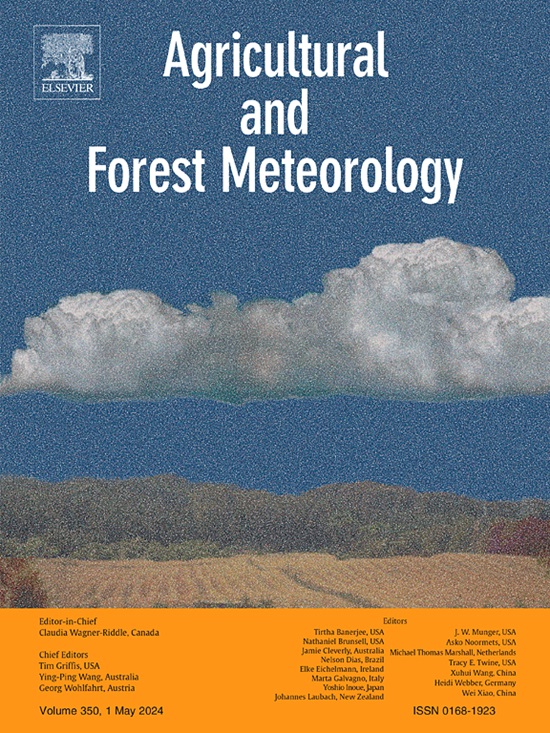Simulating oasis-desert interactions in artificial and natural oasis-desert areas: Integration of remote sensing data and CFD methodology
IF 5.6
1区 农林科学
Q1 AGRONOMY
引用次数: 0
Abstract
The rapid expansion of oasis areas and seasonal water scarcity pose significant threats to the stability and maintenance of oases. Oases and deserts exhibit distinct dynamic and hydrothermal properties, resulting in oasis-desert interactions that help alleviate the situation. However, due to difficulties in adequately characterizing the high dynamic and thermal heterogeneities of the real oasis-desert underlying surface at a fine scale, previous studies usually focus on the simulation of ideal scenarios and coarse resolution, which limits further studies of oasis-desert interactions on real oasis-desert underlying surface. In this study, the high spatiotemporal resolution remotely sensed data, including leaf area density (LAD) and land surface temperature (LST), have been acquired to characterize the dynamic and thermal heterogeneities of the oasis-desert underlying surface at a fine scale, which then have been integrated into the improved computational fluid dynamics (CFD) model to simulate the wind speed (U), air temperature (T), and specific humidity (q) with high spatiotemporal resolution (30 m/1 hour) over artificial and natural oasis-desert areas located in the Heihe River Basin. The CFD simulations (U, T, and q) agree well with the observations, with mean bias errors of 0.3 (-0.1) m/s, 1.4 (1.2) °C, and -0.4 (0.1) g/kg, respectively, in the artificial (natural) oasis area. The background wind conditions and the hydrothermal difference between the oasis and desert strongly affect the oasis-desert interactions. Local circulation manifests in the artificial oasis under calm wind conditions, but it is absent in the natural oasis. The artificial oasis exhibit more pronounced micrometeorological effects than natural oasis. This study advances the understanding of oasis-desert interactions and the distinctions between artificial and natural oases, thereby providing valuable insights for promoting the stability and sustainable development of oases in the arid regions of Northwest China and along the Silk Road.
模拟人工和天然绿洲-沙漠地区的绿洲-沙漠相互作用:遥感数据与 CFD 方法的整合
本文章由计算机程序翻译,如有差异,请以英文原文为准。
求助全文
约1分钟内获得全文
求助全文
来源期刊
CiteScore
10.30
自引率
9.70%
发文量
415
审稿时长
69 days
期刊介绍:
Agricultural and Forest Meteorology is an international journal for the publication of original articles and reviews on the inter-relationship between meteorology, agriculture, forestry, and natural ecosystems. Emphasis is on basic and applied scientific research relevant to practical problems in the field of plant and soil sciences, ecology and biogeochemistry as affected by weather as well as climate variability and change. Theoretical models should be tested against experimental data. Articles must appeal to an international audience. Special issues devoted to single topics are also published.
Typical topics include canopy micrometeorology (e.g. canopy radiation transfer, turbulence near the ground, evapotranspiration, energy balance, fluxes of trace gases), micrometeorological instrumentation (e.g., sensors for trace gases, flux measurement instruments, radiation measurement techniques), aerobiology (e.g. the dispersion of pollen, spores, insects and pesticides), biometeorology (e.g. the effect of weather and climate on plant distribution, crop yield, water-use efficiency, and plant phenology), forest-fire/weather interactions, and feedbacks from vegetation to weather and the climate system.

 求助内容:
求助内容: 应助结果提醒方式:
应助结果提醒方式:


